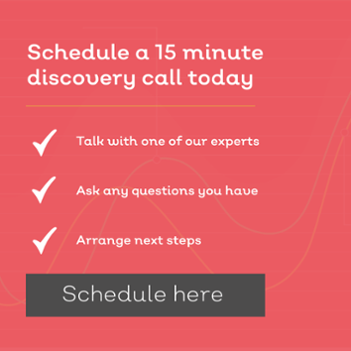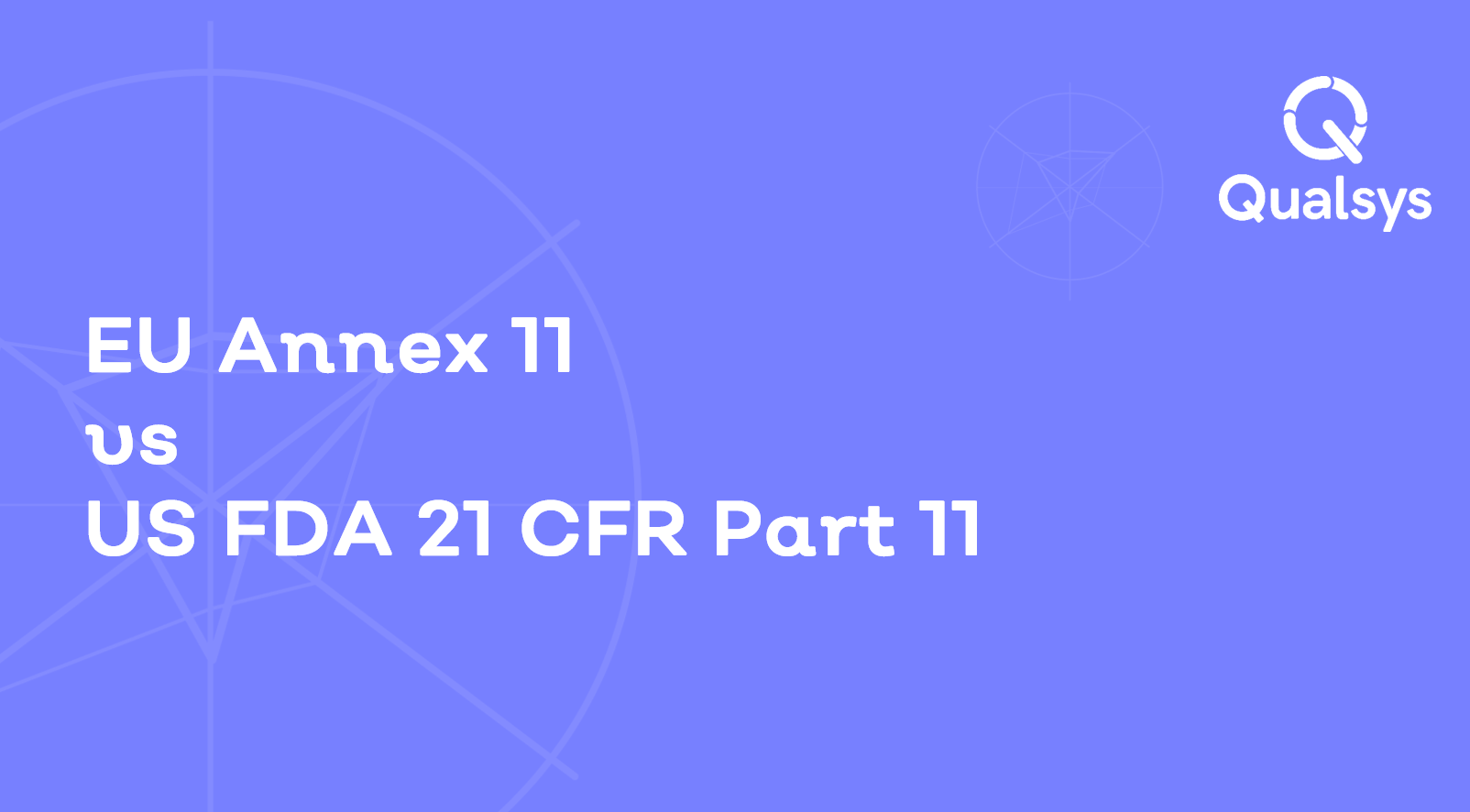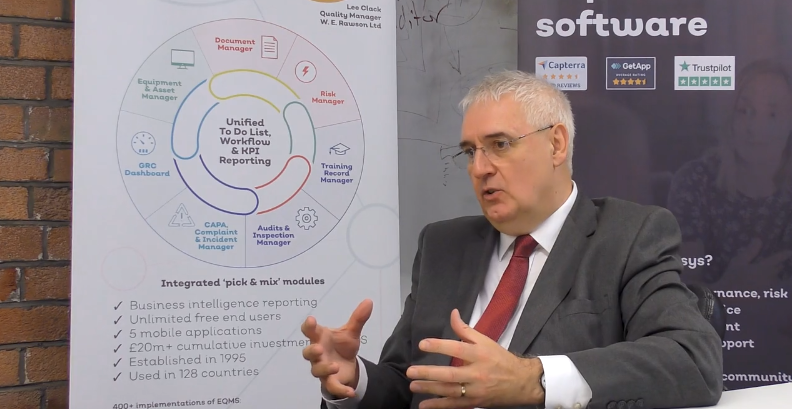Want to contribute to this article?
DYSIS Medical designs and manufactures colposcopic medical equipment for the in vivo detection of cancerous and pre-cancerous cervical lesions.
As a medical device company, DYSIS must demonstrate the most meticulous levels of compliance and quality management - and became a Qualsys customer in 2015 to help them do so.
We asked Quality & Regulatory Manager Paul Houston to share his experiences of the medical device quality world, from ISO 13485 to 'FDA speak', and discussed the company's EQMS project.

Qualsys: Which EQMS modules do you use at DYSIS, and why?
Paul: We use Document Manager, Training Records Manager and CAPA Manager.
As a medical device manufacturer, we have to comply with ISO 13485. Since we ship to the US, we also have to comply with the Code of Federal Regulations: FDA 21 CFR Part 820.
Both regulations say the same things, but in slightly different ways. Documentation and training management are common elements of both - and EQMS provides us with a system to ensure we've got control.
Qualsys: How do you gather the information you need to get a medical device approved and onto the market?
Paul: CE marking is a big part of the process of going to market and gives specific requirements for us to meet for each device. You're essentially given a compliance checklist to go through which requires various studies and verification and validation steps, which tell you the information you need to get together.
It's a very long-winded and complex procedure, and when you're ready an EU notified body will come and give you the stamp to show you've met what you need to.

Before the DYSIS Ultra digital colposcope went to market, cervical cancer was only diagnosed at an early stage in 45% of patients. In clinics where Ultra is used, it's now 85%.
Qualsys: As someone who's been there and done that, what advice would you give to other quality professionals helping to get a medical device to market?
Paul: I think having a solid system to start with is key. You need at least a basic quality system. There's nothing in any of the standards which says it needs to be an electronic system, but it really does help.
We were using a paper system to begin, and it gets very complex. We moved onto Dropbox and OneDrive, and ultimately EQMS. EQMS gives us notifications and audit trails, which makes it far better than any of the free stuff you can get out there.
It's very difficult to comply with regulations when you've got paper all over the place, you've got no traceability or accountability. An electronic system absolutely helps you with that. I know it's a big investment for small companies like us, but it really does help.

The National Institute for Health & Care Excellence recommended DYSIS's technology for use in the NHS Cervical Screening Pathway this year
Documentation and training management are common elements of both ISO 13485 and FDA 21 CFR Part 820- and EQMS provides us with a system to ensure we've got control.
Qualsys: How did your EQMS software project begin?
Paul: We had paper, we weren't complying as we should have been. We didn't have a training system. When I was first brought in, that was my recommendation. I'd used other systems in the past and felt that was the best way to comply. And we felt that Qualsys was the right size company to work with us and could support our needs.
There's no getting away from the fact that software like this can be expensive, but it is a necessity I think.
It's very difficult to comply with regulations when you've got paper all over the place, you've got no traceability or accountability. An electronic system absolutely helps you with that. I know it's a big investment for small companies like us, but it really does help.
Qualsys: Do you have implementation tips you can share? How did you build EQMS into your business?
Paul: The problem is juggling your day job as well. If implementation was all you had to do and you could dedicate all your time to it, you could get it out of the way in a few days.
I've spoken to two other companies and recommended Qualsys to them, and the one thing I said to them both was: do this as a dedicated project. Don't let it go on for too long, or you can lose momentum. Take a week out and say, "that's all I'm doing". Then get your training done. You're much more centred in that way and you can get things done much more quickly.
Qualsys: You've touched on the cost and time expenditure of building an electronic medical device quality management system. Do you think it was worth it for DYSIS?
Paul: Yes. We use CAPA Manager for change control and non-conformances, which makes everything much more visible. Our documents are much more accessible for all, people can just go in and search for what they need. We've mapped our system onto the different roles in the company. In terms of all that, it's been fantastic.
We didn't have a training system before. Now we do. I can go into the module and within the next 20 or 30 seconds tell you who has outstanding training and whose training records have been approved. That's excellent.

DYSIS received an £18m growth investment in July
Qualsys: Who uses the system at DYSIS?
Paul: Everyone. That's one of the reasons we chose this system. We had Dropbox in the past and we only had a handful of licences, perhaps 7 or 8. And OneDrive is just a free-for-all. With EQMS, everyone has access because everyone needs training and to understand our processes.
Qualsys: How did you decide how to structure your document management system? What's the best way for medical device companies to do that?
Paul: I guess there's no right or wrong way to do it. We just mapped our previous paper system onto the module. I've seen other companies follow the structure of the relevant ISO standard - so you have your documents set up in line with the various clauses of the standard, which really helps compliance.
We're really heavily regulated by the FDA, so I'd recommend using their language, setting up things like design history records, using their terminology wherever you can. That really helps. That'd be my recommendation: use 'FDA speak'.

DYSIS Ultra provides a digital level of detail
for diagnosis and detection of cancer
Qualsys: What are the main mistakes to avoid for governance, risk and compliance in this sector?
Paul: Don't neglect the standards. Make sure you understand them from day one and you're not going down a blind alley. They are written in a way that can be misinterpreted and you always have to be able to justify the way you're doing things. A good understanding of the regulations will stop you going down the wrong road.
With EQMS, everyone has access because everyone needs training and to understand our processes. Our documents are much more accessible for all, people can just go in and search for what they need. We've mapped our system onto the different roles in the company. In terms of all that, it's been fantastic.
Qualsys: You mentioned that you handle your change controls and your corrective and preventative actions with our software. Could you share a couple of examples?
Paul: We handle our design of the product within the system. It's great for that because it gives good traceability and you can attach relevant documentation - that really helps with change control. We also use it if any manufacturing changes have to be made.
The change control part of the system is pretty much how it came to us out of the box. Our non-conformance system is much more configured to us. We worked with the Qualsys team to develop that and change it to our requirements; things like non-conformant product, mistakes, missed approvals, anything that means we aren't meeting our quality requirements are all met by a CAPA to correct them.
We're really heavily regulated by the FDA, so I'd recommend using their language, setting up things like design history records, using their terminology wherever you can. That really helps. That'd be my recommendation: use 'FDA speak'.
Qualsys: How do you measure what our system is doing for you? Do you have certain KPIs that you track to demonstrate the success of EQMS?
Paul: That's a good question and very topical. We've just introduced new KPIs to help us do that. One of them is to bring our closure time down in relation to target dates. Having our CAPAs and non-conformance information together helps traceability, and though we don't have any concrete data yet, there definitely has been a reduction in time taken to close the actions we've raised in EQMS.
Qualsys: We hosted a workshop in June about building a culture of quality that involves everybody in the business. Do you think EQMS has had a cultural impact for you?
Paul: It's had a massive impact. Everyone is aware of quality, the documents are there. The level of engagement with the system varies by role, but everyone uses it and contributes to quality now. It's changed the culture completely.
Qualsys: What's on the horizon for DYSIS next?
Paul: We're happy with EQMS and it's just a case of fine-tuning and adding certain things now. Jamie [Rose, Account Manager]'s just sorted out an update for us so we can attach documents straight from EQMS into Office, which will be great.
As we expand into new territories, there'll be new area-specific standards we'll have to comply with. We're always looking to add to our portfolio. Something as basic as being able to upload a standard into Document Manager so everybody, not just the quality department, can read and understand it will be really useful for that.

| Talk to us about your medical device, life science, and GxP / regulatory requirements:
|
Next steps
Download our free ISO 13485 toolkit for a comprehensive breakdown of the medical device standard.
Paul's colleague in DYSIS's Athens office, Kallia Argyriadou, shares her tips for implementing a life science quality management system with some of our other customers here.
Or explore how our software helps medical device companies meet ISO 13485, FDA and MHRA requirements with our free datasheet.
Want a quick chat to discuss how we can help? Schedule a 15-minute discovery call with one of our team here.









Share your thoughts on this article